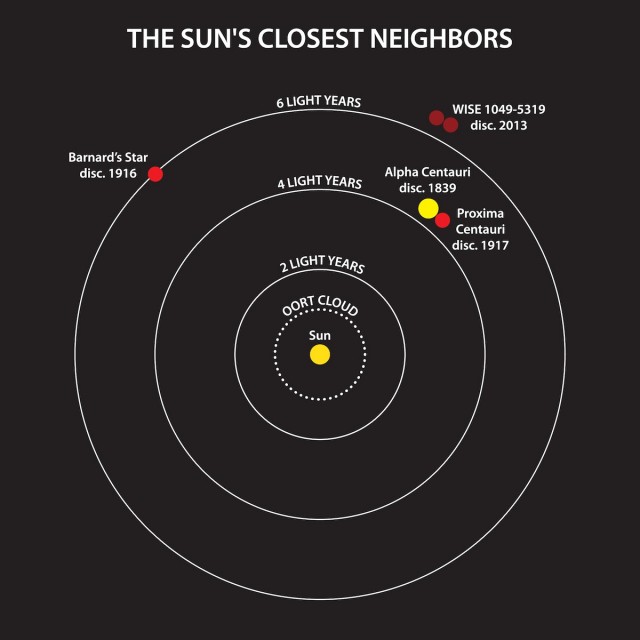General Discussion
Related: Editorials & Other Articles, Issue Forums, Alliance Forums, Region ForumsA pair of brown dwarfs has been spotted slightly more than six light years away.
Today, an astronomer announced that by scanning archival images dating back to 1978, he has located a binary star system only 6.5 light years from Earth. This is close enough that it qualifies as the third-closest star system to our Solar System. The system is composed of two brown dwarfs orbiting each other with a period of about 25 years.
The stars were first noted in the WISE survey, which cataloged objects in the infrared. Because the mission lasted longer than planned, it was able to complete two scans of the sky. Astronomer Kevin Luhman spotted the system, which is going by the name of WISE J104915.57-531906, because it moved significantly between the two scans. Going back to earlier surveys, he was able to spot the same object moving across the sky for decades. (His home institution, Penn State, is hosting a nice animated GIF of its progress.)
Since these observations were obtained at different locations (some of them in orbit), it was possible to calculate a distance to the object using a method called parallax. This produced a result of 6.5 light years with an error of less than half a light year, which places it just beyond Barnard's Star, the second closest star to Earth after the members of the Centauri system. Luhman also turned a telescope toward the new object to get its spectroscopy. This revealed that the item wasn't a single object, but two—based on the low apparent temperature, they appear to both be brown dwarfs and too cool to ignite hydrogen fusion.
How did we miss this all for so long? Luhman suggests that it's because it is located near the galactic plane from our perspective, a bright, busy area that can obscure a dim system like this. Plus there's the fact that it's dim to begin with. That, however, could become a big advantage once the James Webb Space Telescope is put into orbit. It will do its imaging in the infrared and should be able to easily resolve the two objects, along with any planets that may be orbiting them.
http://arstechnica.com/science/2013/03/meet-the-suns-new-neighbors/
derby378
(30,252 posts)They're just cool enough to have a weather system complete with rain. IRON RAIN. I kid you not.
baldguy
(36,649 posts)Guess what? IT IS!
http://www.myspace.com/ironrainchicago
derby378
(30,252 posts)But it must have violated copyright or something, because YouTube pulled it. It was rather neat and scary. Tiny particles of iron are blown up into the brown dwarf's atmosphere and then precipitate down to the surface due to gravity, only the brown dwarf's gravity causes the iron to fall at such a tremendous speed that it heats up and turns into molten droplets that smash against the surface. Yikes.
lonestarnot
(77,097 posts)nadinbrzezinski
(154,021 posts)I am an astronomy geek
dimbear
(6,271 posts)nearest star to us (outside the solar system) is at the present moment unknown. Humbling, somehow.
nomorenomore08
(13,324 posts)So it seems likely anything brighter, and closer to us, would have been found already. But who really knows?
HiPointDem
(20,729 posts)
baldguy
(36,649 posts)We'll call them Oompa & Loompa.
ZombieHorde
(29,047 posts)yellowcanine
(35,701 posts)LeftInTX
(25,556 posts)Yet, we couldn't even see them.
WillyT
(72,631 posts)
ismnotwasm
(42,014 posts)I just love it. Exciting times